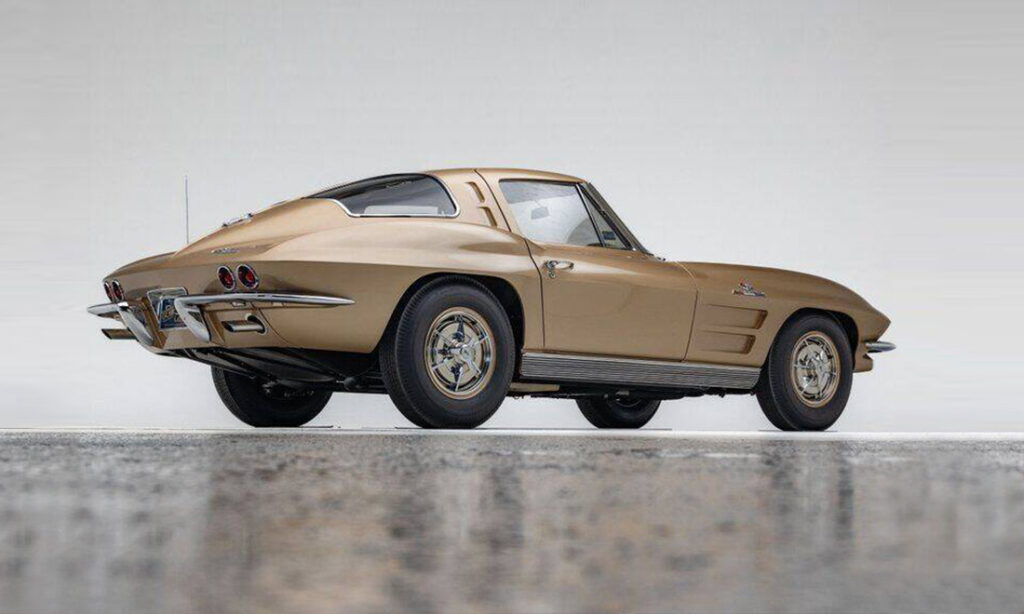Pontiac GTO Generations: Through the Years
From the ban that started it all to the best-selling 1966 model, explore the history of the original muscle car: the Pontiac GTO!
A Ban, A Loophole, and A Man Named DeLorean
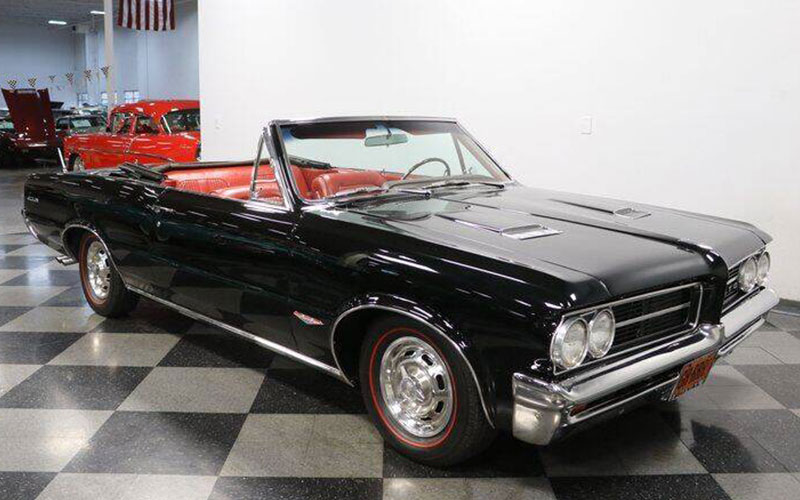
1964 Pontiac GTO – carsforsale.com | Shop Pontiac GTO on Carsforsale.com
The Pontiac GTO has a rich history over several generations. It’s a supercar that has become legendary, an influencer in the muscle car craze, but it all started when General Motors put a ban in place on producing cars made for racing. Before that ban in 1963, Pontiac was focused on producing cars for the race track. After that ban, Pontiac had to differentiate itself.
The engineering team of John DeLorean (yes, that DeLorean), Russ Gee, and Bill Collins gathered to make a powerful car that was fun to drive. They pulled the ‘GTO’ letters from the Ferrari 250 GTO, an abbreviation for Gran Turismo Omologato. Translated from Italian to English, that means ‘Grand Tourer Homologated.’
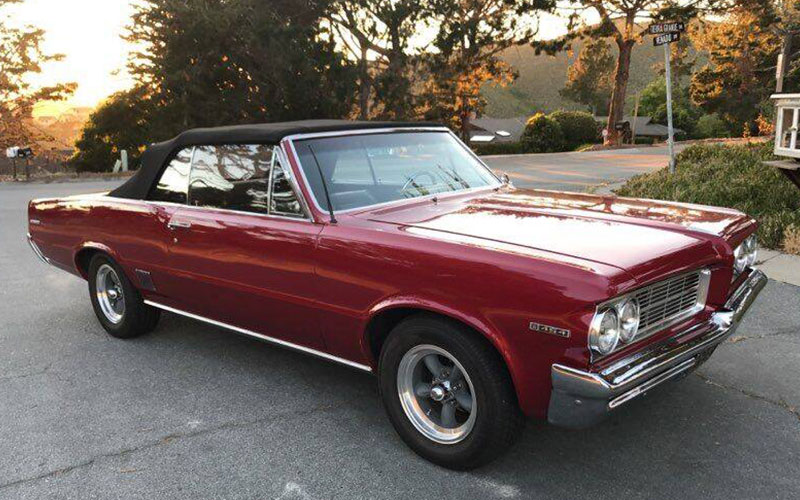
While looking at a prototype of the 1964 Le Mans Coupe, Collins suggested adding a 389-cubic-engine to it. The addition improved power and handling, but GM had an internal policy that all vehicles must have 10 lbs of vehicle weight per cubic inch of engine displacement.
Thankfully, a loophole was found: the displacement limit only referred to base engines. The development team skirted around GM’s mandate by offering the GTO as a package for the Le Mans. What happened next? Well, you have to continue reading to find out how the GTO went on to become known as ‘The Legend,’ ‘The Great One,’ ‘The Tiger,’ ‘The Grandfather of Muscle Cars,’ and ‘The Goat,’ a car that could eat anything on the street.
First Generation Pontiac GTO (1964-1967)
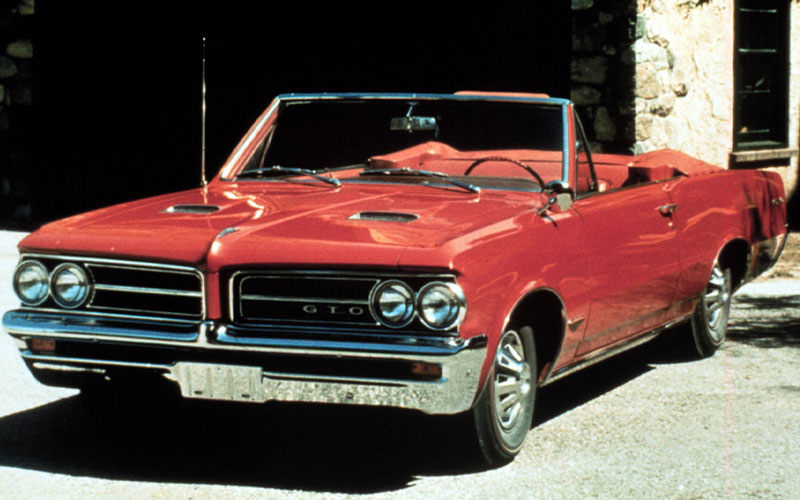
- The GTO package offered in the 1964 Pontiac Le Mans included an upgraded 6.4-liter V8 engine, which made 325 horsepower.
- The Pontiac GTO could go from 0 to 62 miles per hour (mph) in 6.9 seconds, maxing out at 122 mph.
- A tri-power setup was also offered, increasing output to 348 horsepower.
- A three-speed manual transmission was standard, but customers could also get a two-speed automatic or four-speed manual transmission.
- For 1965 models, Pontiac added stacked headlights, a new rear fascia, and a new hood scoop.
- In 1965, the GTO was offered with 335 horsepower from the 389 cubic-inch base engine or 360 horsepower with the tri-power engine.
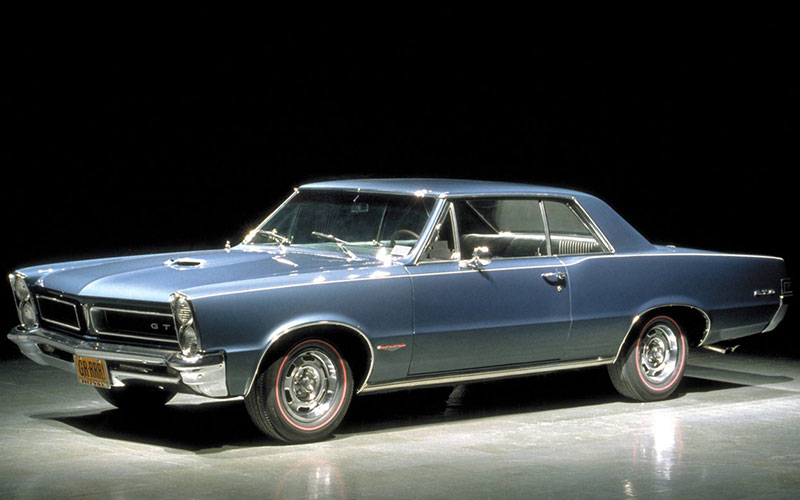
- The GTO was offered as an option for the 1964 and 1965 Pontiac Tempest as well.
- The Tempest model lineup, which included the GTO, was restyled for the 1965 model year, adding 3.1 inches in length.
- The base engine had 431 lb-ft of torque while the tri-power engine made 431 lb-ft of torque.
- After the success of the GTO as part of the Le Mans and Tempest, Pontiac offered the GTO as its own model in 1966.
- The 1966 Pontiac GTO had new styling which included raised fender lines, helping to give the body a more curved look.
- The front metal grille was replaced with a plastic one.
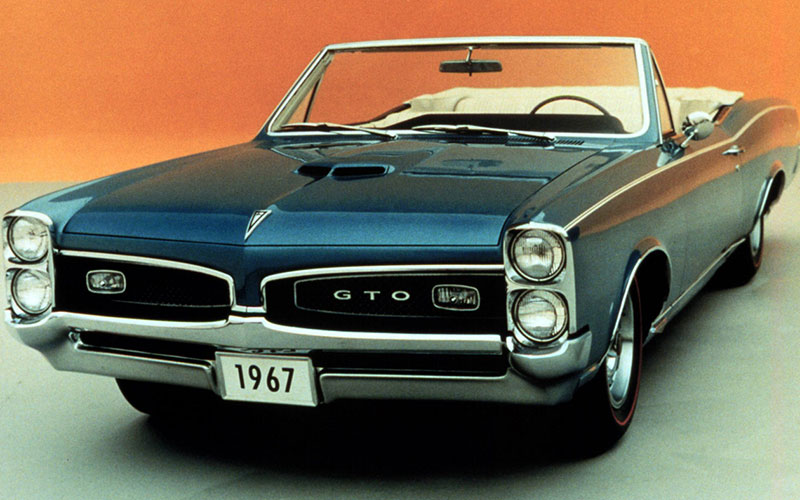
- 1966 was the best sales year ever for the GTO, with GM selling 96,946 GTOs that year.
- Ending the first generation of this vehicle was the 1967 Pontiac GTO.
- The 1967 Pontiac GTO split grille was made of chrome and the GTO emblems were moved to the rocker panels.
- Under the hood, the 1967 Pontiac GTO increased engine power with an upgraded 400 cubic-inch engine making 335 horsepower.
- A single four-barrel HO option made 360-horsepower.
- The 1967 Pontiac GTO didn’t offer the tri-power option because GM had a policy banning multiple carburetors.
Second Generation Pontiac GTO (1968-1972)
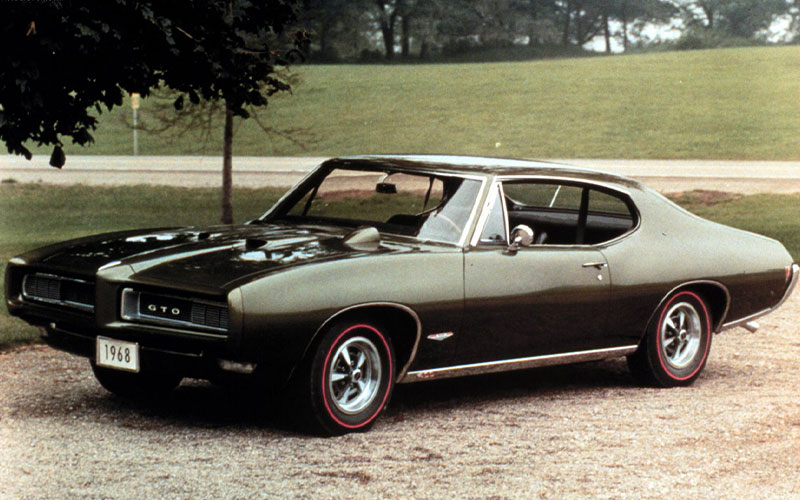
- The 1968 Pontiac GTO was given a total makeover.
- It was constructed on an A-body platform.
- The wheelbase was shortened, but the total vehicle length increased.
- The weight of the 1967 Pontiac GTO also increased.
- A rubber bumper, called the Endura, replaced the previous chrome bumper.
- A standard 400 cubic-inch V8 made 400 lb-ft of torque and 350 horsepower, an increase of 15 horsepower over the 1967 Pontiac GTO.
- An alternate 455 cubic-inch V8 with four-barrel carburetor made 360 horsepower.
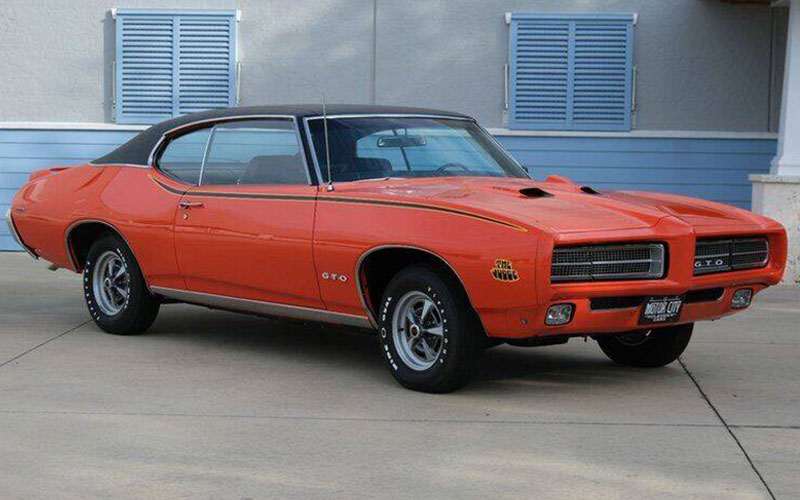
- The 1969 Pontiac GTO was given minor revisions to the grille and taillights.
- The 1969 GTO maintained the standard engine from the previous model year, but two optional engines included a Ram Air III and a Ram Air IV.
- The Ram Air III made 366 horsepower and the Ram Air IV made 370 horsepower.
- The Pontiac PTO Judge was another optional package, enhancing the style with a rear spoiler, wider tires, and decals.
- Hoping to appeal to buyers interested in street performance, the 1970 Pontiac GTO upgraded the car’s suspension, lowered body lean, and minimized understeer.
- High output was also a goal, so the 1970 GTO included an optional 455 HO engine, a V8 that made 360 horsepower and 500 lb-ft of torque.
- Styling changes for the 1971 Pontiac GTO included horizontal bumper bars, wire mesh grilles, and a hood with dual scoops.
- GM, again, instituted new policies that impacted the PTO.
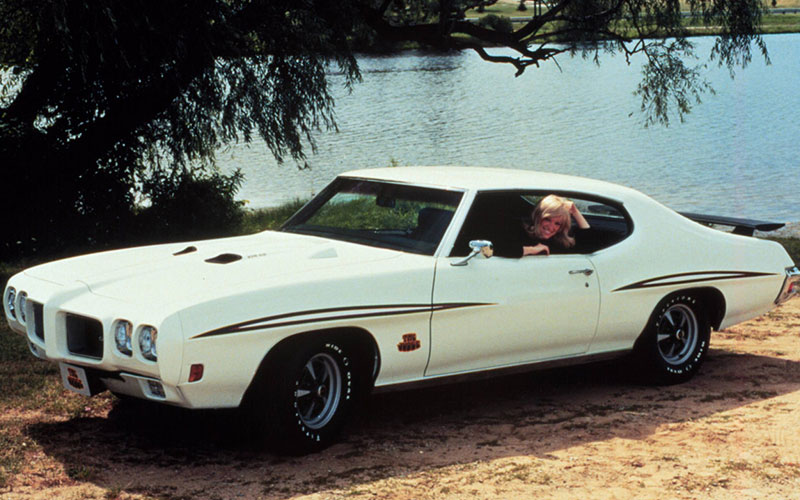
- The new policy was attempting to prepare cars for no-lead gasoline, so the PTO reduced its compression ratios.
- It was no longer offered with the Ram Air engines either, instead using a standard V8 that made just 255 horsepower.
- Two 455 engines were still available, making either 260 horsepower or 310 horsepower.
- The 1971 model year was the last time the Judge was offered as an option for the GTO.
- Only 10,532 people purchased a 1971 GTO.
- It was because of low sales that GM pulled the 1972 Pontiac GTO as a stand-alone model for the 1972 model year.
- Instead, the GTO was offered as an option package for the 1972 Pontiac Le Mans and Le Mans Sport.
Third Generation Pontiac GTO (1973)
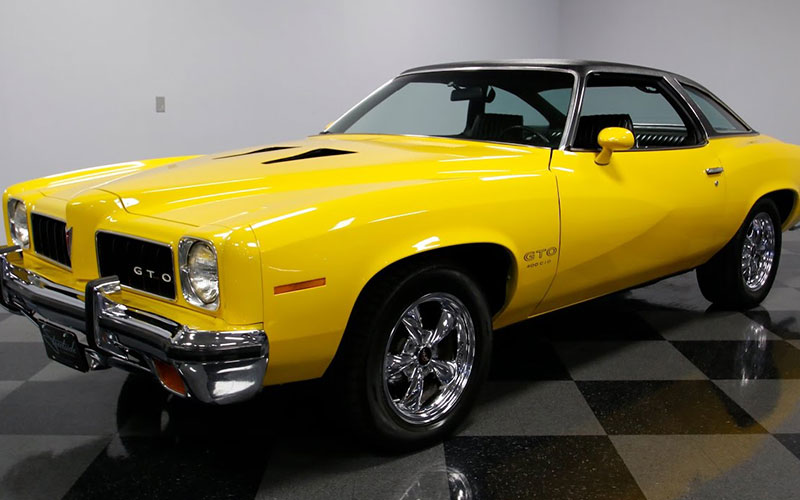
- The Pontiac GTO started its third generation as an option to the 1973 Le Mans and Le Mans Sport Coupe.
- The A-body was redesigned for the 1973 models.
- This GTO was only offered as a two-door hardtop coupe.
- Colonnade styling included frameless door windows and a roof pillar.
- The rear side windows were triangular and couldn’t be opened.
- The Endura bumper was removed due to United States safety regulations, so heavy chrome bumpers were added in the front and rear.
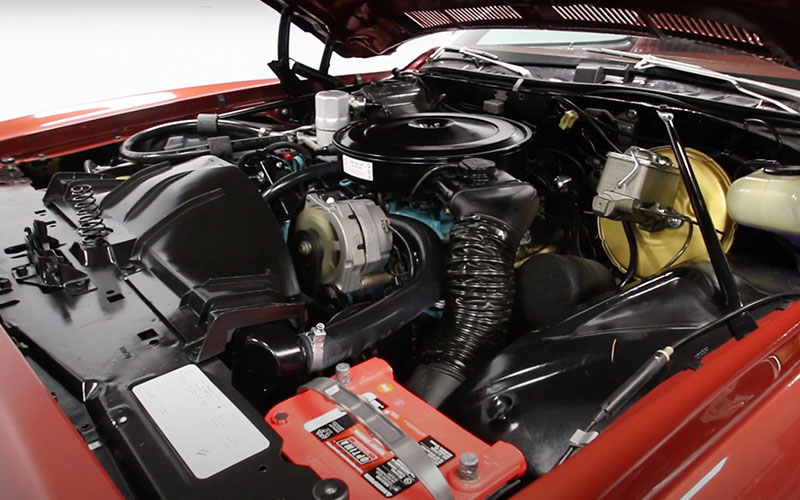
- HO exhaust manifolds, the aluminum intake, chrome rocker-arm covers, chrome air-cleaner lids, and the 455 HO engine were all removed for the 1973 model.
- Horsepower with the V8 in the 1973 GTO dropped to 230.
- A 455 V8 engine provided 250 horsepower for customers who wanted to upgrade.
- The third generation of the Pontiac GTO was short-lived, ending after one model year.
- A little under 5,000 1973 GTO models were sold.
Fourth Generation Pontiac GTO (1974)
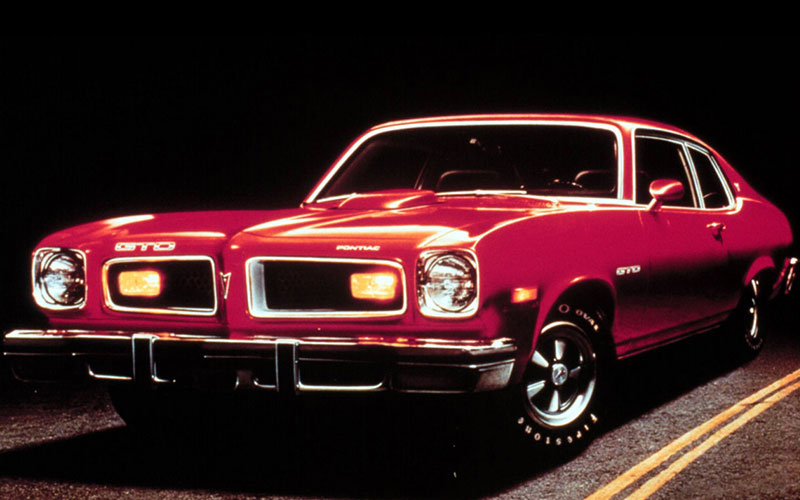
- GM came back a year later for the fourth generation of the Pontiac GTO.
- The 1974 GTO used a more compact body style with GM’s X-body platform.
- It was offered as a two-door coupe and a two-door hatchback coupe.
- Instead of being offered as an option for the Le Mans, the GTO was offered for the 1974 Pontiac Ventura.
- The 1974 GTO had a 350 cubic-inch V8 engine with 200 horsepower.
- It was able to go from 0 to 60 mph in 9.3 seconds.
- Dual exhausts, a four-barrel carburetor, a blackout grille, and Rally II wheels were all added to this fourth generation GTO.
- This GTO was also offered in hatchback form, a first for the car.
Fifth Generation Pontiac GTO (2004-2006)
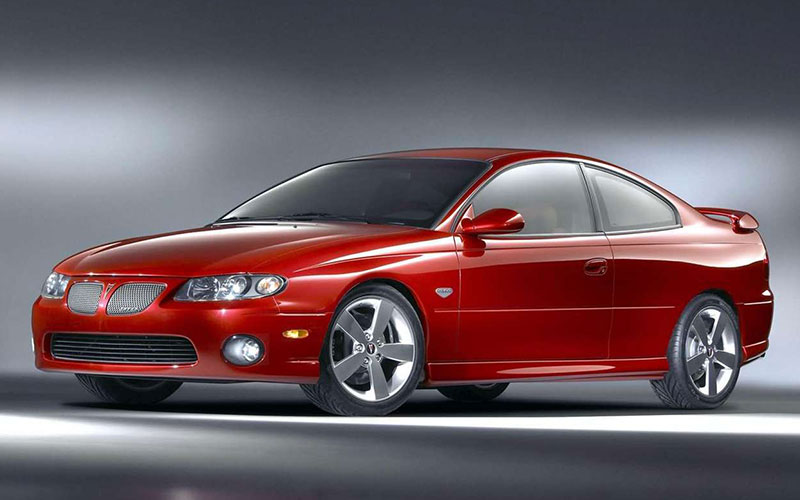
- The Pontiac GTO went on a 30-year break in production before the 2004 GTO kicked off the fifth, and final, generation of the vehicle.
- The now-legendary nameplate was brought back in hopes of capturing the same performance, style, and attitude as the GTO had in its heyday.
- GM had just decided to end production of the Pontiac Firebird and Chevy Camaro in 2002, leaving Pontiac without any kind of high-performance vehicle.
- GM announced the GTO’s return at the 2002 New York International Auto Show.
- The 2004 Pontiac GTO showed up on showroom floors by December 2003.
- What buyers saw was a GTO based off of the Holden Monaro’s V platform, from Australia.
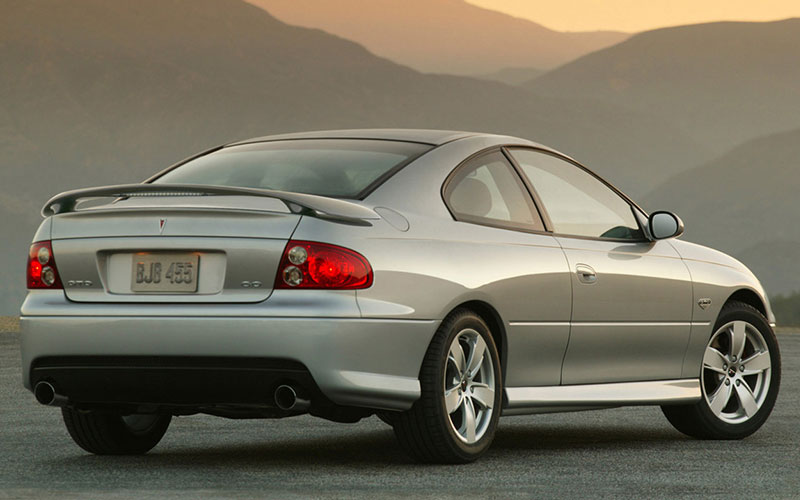
- The exhaust mimicked that of the 1964 GTO, but the look wasn’t at all similar.
- Car enthusiasts weren’t happy that an Australian sports car was the blueprint for a legendary American muscle car.
- You can read more about this rebadging in this article: Cars You Did Not Know Were Rebadged (and Some You Did).
- This revived version of the GTO was given a 5.7-liter LS1 engine, making 350 horsepower.
- A 2004 Pontiac GTO went from 0 to 60 mph in 5.5 seconds.
- Even though this GTO could go, the styling was a mismatch.
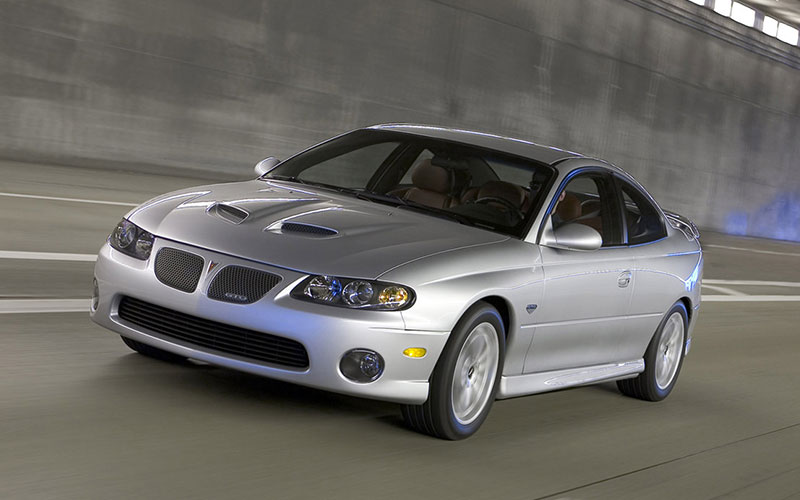
2006 Pontiac GTO – netcarshow.com | Shop Pontiac GTO on Carsforsale.com
- Minimal changes (brake upgrades and split rear tailpipes) were made to the 2005 GTO.
- The LS1 engine from the 2004 GTO was swapped out with a LS2 for the 2005 Pontiac GTO.
- The upgraded engine delivered 400 horsepower.
- The next year, again, only minor changes were made.
- For the 2006 Pontiac GTO, GM added darkened tail lamps, optional 18-inch wheels and tires, and an illuminated steering wheel with radio controls.
- The fifth generation of this storied car ended with close to 41,000 units sold.
Do you like muscle cars, sports cars, and classic cars? We’ve got plenty of that right here! Relive some of the greatest designs and engines by looking at our Chevy Corvette Through the Years, Ford Thunderbird Through the Years, and Dodge Charger Through the Years features.



